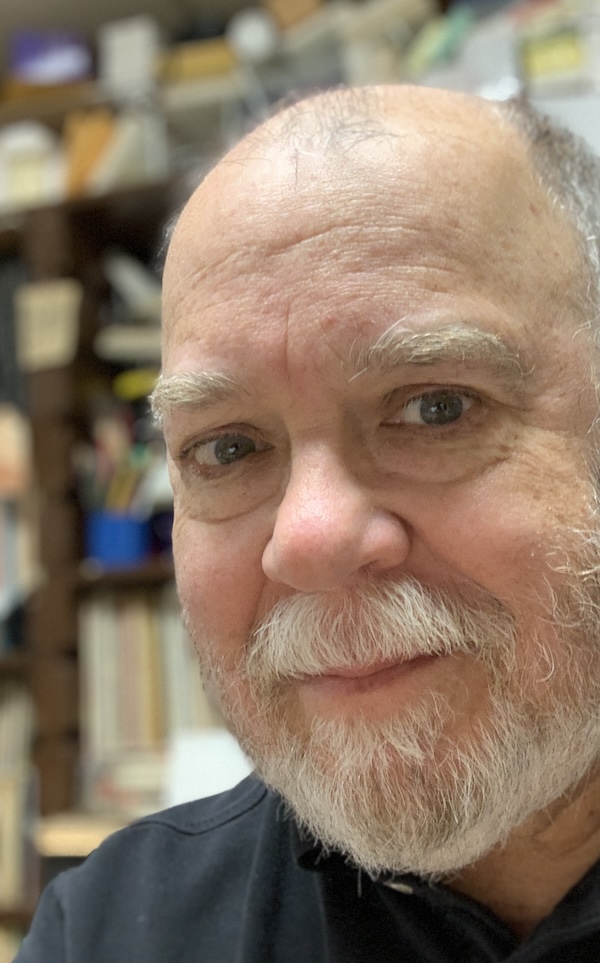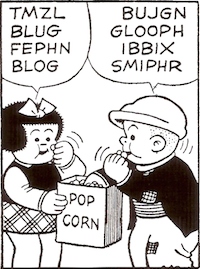As a writer, what do you believe in?
I believe in black ink, yellow legal pads, Castell 9000s, Mongols, Ticonderogas, wooden pencils in general, mechanical pencils in general, erasers in general, Pelikans, Safaris, Uni-ball Signos, the T-Ball Jotter, index cards, Post-it Notes, pocket notebooks (Field Notes, IBM Think pads, Moleskines), a larger notebook that my daughter gave me (Moleskine), PocketMods, nvALT, Simplenote, TextWrangler, WriteRoom.
But also: any available paper, any available Bic.
Thursday, January 30, 2014
Writing and belief
By
Michael Leddy
at
8:14 AM
comments: 6
![]()
Wednesday, January 29, 2014
Humph
How like Arts & Letters Daily to take no notice of Pete Seeger’s death. (I didn’t think they would.)
By
Michael Leddy
at
10:48 AM
comments: 0
![]()
Inequality v. disparity
The phrase income inequality — a phrase not in the State of the Union address, but a phrase that is everywhere in commentary on that address — makes me uneasy. In a capitalist economy, what could be the alternative to income inequality? People earn more or less, for many reasons. And indeed, some of those reasons are a matter of injustices woven deep into American life. But income, unlike rights, cannot be distributed equally to all.
Equal pay for equal work? Of course. But the phrase income inequality points to a larger matter: the great gap between the wealthiest Americans and everyone else. The problem there is not income inequality: it is income disparity.
A related post
Income disparity in higher ed
By
Michael Leddy
at
10:17 AM
comments: 7
![]()
Tuesday, January 28, 2014
Pete Seeger (1919–2014)

[“Pete’s banjo head.” Photograph of Pete Seeger’s banjo by Tom Davis (tcd123usa), via Flickr, licensed under a Creative Commons License.]
The New York Times has an obituary.
Pete Seeger was the first musician I saw in concert. I was all of twelve: my dad took me on a Monday night, all the way from New Jersey to Queens. Years later I heard Pete Seeger sing from the porch of a house in Little Compton, Rhode Island.
Here’s a Joe Brainard-like post from 2009, when Pete Seeger turned ninety.
Thanks, Tom, for sharing your photograph. Thanks, Dad, for taking me to the Bronx. Thanks, Pete, for opening a world of music to me.
Related reading
All OCA Pete Seeger posts (Pinboard)
By
Michael Leddy
at
8:23 AM
comments: 0
![]()
Monday, January 27, 2014
Naked City mystery guests


[From the Naked City episode “Sweet Prince of Delancey Street,” June 7, 1961.]
Can you identify the actors? One is making his first screen appearance.
“Sweet Prince of Delancey Street” appears as no. 93 on a 1997 TV Guide list of the hundred best television episodes, the only Naked City episode on the list. It’s a great episode, a variation on Hamlet that begins on a terrifying and disorienting note. But there are other Naked City episodes just as good. In truth, there are few episodes of Naked City that are less than compelling.
Making my way through the four seasons of the series confirms for me the Swiss-cheesiness of Steven Berlin Johnson’s claim that television past required little if any “intellectual labor” from a viewer. A Naked City episode (say, “The Deadly Guinea Pig”) can leave its viewer trying to figure out for twenty or thirty minutes what’s going on. Or, as at the end of the episode “The One Marked Hot Gives Cold,” what happened.
Related reading
All Naked City posts (Pinboard)
By
Michael Leddy
at
8:25 AM
comments: 7
![]()
Friday, January 24, 2014
Income disparity in higher ed
Daughter Number Three has a thoughtful post on income disparity: How Much Is Too Much? Her recommendation: 30:1. In other words, the highest-paid employee in a company should earn no more than thirty times what the lowest-paid employee earns. Peter Drucker’s recommended ratio was lower still: 20:1.
I thought it would be instructive to see how these ratios might work in a college setting. The highest-paid employee at some schools is of course not the president but the football coach. In December 2013, Forbes named the University of Alabama’s Nick Saban as the highest-paid college coach in the country, earning $5.4 million this season. A contract extension is about to bring him more than $7 million per season. Let’s call it an even $7 million.
With a 30:1 ratio, the lowest-paid employee at the University of Alabama would earn a yearly income of $233,333. With a 20:1 ratio, $350,000. Given a forty-hour week, a 20:1 ratio translates to an hourly wage of $168. Plausible? No. But neither, to my mind, is the coach’s salary.
The Adjunct Project reports adjuncts at Alabama earning $2,500 to $5,000 per course. If the lowest-paid full-time adjunct at Alabama earns $20,000 a year, the high-to-low ratio is 350:1. (And service workers likely earn less.) Something is rotten — and not just in Tuscaloosa.
[I became interested in Peter Drucker’s work after reading his Managing Oneself. There’s an excerpt in this post. The Chronicle of Higher Education reports that in 2011, Robert J. Zimmer of the University of Chicago was the highest-paid college president. Total compensation: $3,358,723.]
By
Michael Leddy
at
10:59 AM
comments: 4
![]()
A Homeric Faulkner simile
It’s in As I Lay Dying (1930). “Really a Homeric simile,” says my note in the margin. Darl Bundren is the narrator:
A feather dropped near the front door will rise and brush along the ceiling, slanting backward, until it reaches the down-turning current at the back door: so with voices. As you enter the hall, they sound as though they were speaking out of the air about your head.It’s fitting that a Homeric simile should appear in this novel. As the 1990 Vintage edition of the novel notes,
When asked about source of his title, Faulkner would sometimes quote from memory the speech of Agamemnon to Odysseus in the Odyssey, Book XI: “ As I lay dying the woman with the dog’s eyes would not close my eyes for me as I descended into Hades.”The woman is Agamemnon’s wife Clytemnestra. I’m unable to find a translation that matches Faulkner’s.
[Homeric simile, or epic simile: an extended comparison. It presents the unfamiliar (actions and things from days of old, the epic past) in familiar terms: a fallen warrior likened, say, to a young tree swiftly cut down. Homer’s similes invoke the world of the farm, the countryside, everyday realities. They are occasions for the poet to show his stuff: a student of mine (whose name I wish I could remember) once likened them to guitar solos.]
By
Michael Leddy
at
7:44 AM
comments: 2
![]()
Thursday, January 23, 2014
National Handwriting Day

[Some of mine.]
Handwriting’s day has not yet passed: I believe in “the scrawl,” as E. B. White called it. Happy National Handwriting Day.
Related reading
All handwriting posts (Pinboard)
By
Michael Leddy
at
9:42 PM
comments: 0
![]()
Five more punctuation marks in literature
Following yesterday’s post on punctuation marks in literature, five more, in order of increasing favoritism:
5. The forward slash (or solidus) that takes the place of the apostrophe in Hubert Selby Jr.’s Last Exit to Brooklyn: “I/ll see ya tomorrow.”
4. The apostrophes in line nine of William Shakespeare’s sonnet 116: “Love’s not time’s fool,” even if one of them is a later addition. The 1609 Quarto: “Lou’s not Times foole.”
3. The ellipsis that marks silences in David Foster Wallace’s Infinite Jest:
‘Hal?’4. The exclamation point that ends Rae Armantrout’s “Dusk”: “I’m not like that!”
‘. . .’
‘Hey Hal?’
5. The comma in the final line of John Donne’s Holy Sonnet 6: “And death shall be no more, Death thou shalt die.” Or rather, that comma — not semicolon — as it figures in Margaret Edson’s play Wit. See here.
My top ten, in order of increasing favoritism: Selby, Shakespeare, Pound, Faulkner, Wallace, Joyce, Armantrout, Dickinson, Sterne, Edson.
Related reading
All OCA punctuation posts (Pinboard)
[I’m aware of the charge that the apostrophe is a matter of spelling not punctuation. But I still think of it as punctuation. I’ve read somewhere that Wallace picked up the ellipsis from Manuel Puig. The Playbill for Wit read W;t: a beautiful touch of you-know-what.]
By
Michael Leddy
at
8:01 AM
comments: 2
![]()
Wednesday, January 22, 2014
Five punctuation marks in literature
Circulating on the Internets: Kathryn Schulz’s list of the five best punctuation marks in literature. It prompts me to make my own (Anglo-American-centric) list of favorites. I can’t claim “best.” But in order of increasing favor:
5. The colon that ends Canto I of Ezra Pound’s The Cantos: “So that:” Later used to end the first sentence of William Faulkner’s The Reivers: “Grandfather said:” And the rest follows.
4. The semicolons that end paragraphs in William Faulkner’s Requiem for a Nun:
The courthouse is less old than the town, which began somewhere under the turn of the century as a Chickasaw Agency trading-post and so continued for almost thirty years before it discovered, not that it lacked a depository for its records and certainly not that it needed one, but that only by creating or anyway decreeing one, could it cope with a situation which otherwise was going to cost somebody money;3. The period that ends the “Ithaca” episode of James Joyce’s Ulysses:
Where?2. Emily Dickinson’s dashes, any one or more of them: “Are you — Nobody — too?”
.
1. The long dashes in Laurence Sterne’s Tristram Shandy, which I can only approximate here:
L--d! said my mother, what is all this story about?——Reader, what are your favorite punctuation marks in literature?
A COCK and a BULL, said Yorick —— And one of the best of its kind, I ever heard.
*
I wrote a second post with five more.
Related reading
All OCA punctuation posts (Pinboard)
By
Michael Leddy
at
11:00 AM
comments: 1
![]()

